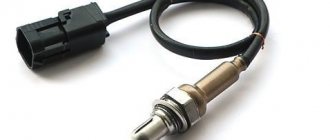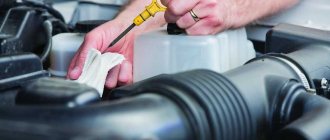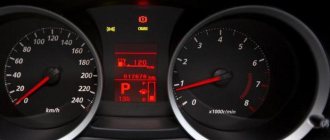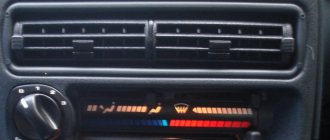Often, when operating a vehicle on gas, owners do not pay due attention to the maintenance of the gas equipment system. And often the malfunctions of the 4th generation HBO, which are what we will discuss in today’s article, make themselves felt at the most inopportune moment.
The car simply refuses to run on gas, it loses power, the engine stalls, or fuel consumption increases significantly, why does this happen? Most often, experts identify two reasons why 4th generation gas equipment malfunctions occur:
- Maintenance of the gas equipment system was not carried out on time, or was not carried out at all. Remember! Filters on 4th generation gas equipment should be replaced once every 10,000 km, and with the quality of gas at our gas filling stations even more often!
- Wear of system parts over time, increased wear of components can also be influenced by poor quality gas, incorrectly configured ECU or incorrectly adjusted injectors.
Frequent breakdowns of 4th and 2nd generation gas equipment
As a rule, owners of cars with LPG installation complain about the engine stopping when switching from liquefied gas to gasoline.
The cause of this malfunction lies in improper installation of the system. The malfunction is caused by the fact that when installing gas equipment, the quantity and combustion conditions for liquefied gas are the same as for gasoline. However, these parameters differ significantly from each other. It is important not to hesitate to visit the workshop, and as soon as you see the first symptoms, you should immediately take the car to a specialist. This will help save nerves and unnecessary expenses. Performing computer diagnostics of the system under the guidance of a specialist should identify the cause of the problem. The symptom of both malfunctions will be increased fuel consumption and a decrease in engine power. Running a computer diagnostic on the system will indicate a faulty sensor. Malfunctions of the gas supply system can also be caused by contamination of the air filter, fine and coarse filters.
Symptoms of malfunctions will be increased fuel consumption and a decrease in engine power. If the air filter malfunctions, characteristic shots may additionally appear in the intake manifold (a very common occurrence in the 2nd generation).
The gearbox often also fails. The first main problem indicating a gearbox malfunction may be frequent switching of the unit to gasoline, especially during acceleration. The reducer, popularly called a regulator, is not able to deliver the appropriate amount of gas to the system (maintain the set pressure), the sensor reads pressure drops as a lack of gas in the tank and switches the car to a gasoline power source.
The second reason for gearbox malfunction is reduced heat generation. During hard work, the reducer is not able to heat the expanded gas to the nominal operating temperature, which can lead to increased consumption of gas fuel. In both cases, you can restore or replace with a new gearbox.
It is worth remembering that an LPG installation, even the best one, like any thing, is subject to natural wear and tear. Possible malfunctions should not be scary, because there are enough workshops involved in their service. If we are looking for a solution to problems associated with the installation of liquefied gas, it is worth paying attention to services authorized by the installation manufacturer. The service can provide professional assistance both in the field of warranty repairs within the warranty and post-warranty service. For the convenience of clients, a wide range of services is provided.
Features of installation and operation
Many car owners choose gas because it is much cheaper than gasoline or diesel fuel. In addition, gas fuel creates a better mixture when interacting with air, this is due to the fact that it has good chemical properties. As a result, it turns out that it burns better, and at the same time does not emit a large chemical residue, and also does not leave traces of soot.
The standard set includes the following components:
- a gearbox on which a valve is already installed;
- ramps;
- gas filter;
- temperature sensor;
- switch;
- wiring;
- detailed instructions;
- warranty card.
Due to the fact that Lovato’s products belong to the 4th generation of LPG, the principle of its operation is slightly different from its predecessors. Thus, gas fuel is supplied to the injectors while taking into account the readings of various sensors displayed on the electronic unit from which the system is controlled. Read more about Lovato gas injectors.
The system operates as follows:
- the gas is in a cylinder, which is installed either in the trunk or in the place of the spare tire;
- after the car warms up, the LPG system issues a notification to the panel that you can switch to gas;
- when switching to the use of gas fuel, gasoline stops flowing into the main transport systems;
- gas begins to flow through the open dampers into the gearbox, then into the injectors, and only then into the combustion system.
It is important that the entire process occurs in stages, and everything is distributed as much as possible, which ensures the normal functionality of the car.
Attention! The gas in the cylinder is under high pressure, and it must be reduced to supply it to the engine system. A reducer is used to reduce pressure.
The Lovato 4th generation HBO connection diagram consists of several parts. The first stage consists of installing the cylinder and gas lines; this process does not take much time and is also not very complicated. Most often, the gas cylinder is installed in the luggage compartment, but the filling hole can be installed in the bumper or near the gas tank. The lines themselves are laid under the bottom of the car.
Settings
Do-it-yourself diagnostics of 4th generation HBO can be carried out by installing the equipment on the car yourself. To do this, you will need a diagnostic scanner or a laptop with the appropriate program.
With the help of such devices, the fuel correction of the ECU is determined. It is calculated as a percentage of normal fuel injection. The reference readings of the monitoring sensors are taken as a basis. The equipment is configured in such a way that the correction occurs within +-5%. Tuning is best done under load. Afterwards the result is checked at idle speed. Typically no additional configuration is required.
HBO pressure sensor: what is it
In the latest generations of gas equipment, all sensors are electronic; they work together with the rest of the electronics in the car and thereby allow the driver to clearly monitor changes in the equipment. Most car enthusiasts call this sensor exactly that - a pressure sensor. Although in fact it is responsible not only for determining gas pressure. There are 3 controllers inside this sensor:
It is precisely for monitoring these parameters that the pressure sensor is responsible. That is, a pressure sensor is one device that performs three functions at once.
Malfunctions
Another case in which diagnostics is required is breakdowns and malfunctions. In this case, very often diagnostics using a scanner does not help. Errors only indicate a lean or rich mixture. But the real reason is not revealed. In this case, you will have to carry out some of the diagnostic work manually.
Often the speed on an internal combustion engine (internal combustion engine) equipped with gas equipment begins to float. There are only two reasons for unstable operation:
- No spark;
- No fuel.
The first reason is quite simple to deal with. To do this, it is enough to carry out the usual work on checking the ignition. Finding a fault in the HBO can take quite a long time. The easiest way is to connect to the ECU. But this is not always possible. Therefore, you should take turns clamping the hoses coming from the insert and connected to the nozzles. If, after clamping, the engine begins to fluctuate, then the injector is working. It is advisable to check the presence of a signal pulse to the ECU. This may be the reason. The main reason is injector failure or air leaks.
Take a close look at the pressure. If it drops in the system with a sharp increase in speed, then the gearbox should be replaced. If there is a lack of antifreeze in the cooling system, the gearbox may overheat, which will also lead to unstable engine operation.
Sometimes fuel consumption increases. This is an unpleasant situation. First of all, you need to check the operation of the ignition system, correct tire inflation and other factors affecting fuel consumption. If everything is in order there, we diagnose the HBO.
Other problems
Owners of cars with gas equipment also face other problems. Moreover, these difficulties can only be indirectly related to HBO. Such malfunctions include the lack of automatic switching from gasoline to gas. In this case, you need to check the serviceability of the gas temperature sensor. The reason may also be low voltage on the battery. Another reason is a failure of the tachometer or a break in the wire going from it to the LPG.
Severe dips when operating on gas, even to the point of stopping the engine, indicate the need to check the ignition. Most often, the reason is high-voltage wires or spark plugs. The fact is that to ignite the gas mixture, a more powerful spark is required, compared to gasoline. If it is not strong enough, then problems will occur with the use of HBOT.
Conclusion
. When operating gas equipment, the driver will sooner or later encounter problems. Most often, malfunctions and failures occur due to careless operation. In most cases, diagnosing 4th generation HBO yourself is more effective than a similar procedure in a service center. Therefore, it is better to carefully study the design of this system and find the fault yourself.
There is not so much perfect in this world, and maybe not at all, so when something, at first glance, very thoughtful and perfect fails, you should not be surprised, you should accept it as inevitable.
LPG equipment is also susceptible to breakdowns and malfunctions. Today we will talk about malfunctions of the 4th generation HBO ; we will try to suggest the cause of the breakdown (inoperability) based on the characteristic symptoms.
First, a few words about what causes fourth-generation gas equipment to malfunction.
- Most often, gas equipment fails due to the fault of the motorists themselves. There is no desire to delve into the essence of the HBO device and perform the slightest maintenance thereof.
- Wear of parts also occurs due to poor quality gas, pollution, as well as violation of operating rules and errors made when installing gas equipment on a car.
Dips during sudden gas changes
- Gas injectors are not calibrated correctly.
- The gas filter is clogged.
- The gas pressure in the reducer is insufficient.
- Problem with gas lines.
If, when switching to the engine, it starts to “go bad”, most likely the problem is in a faulty gas system , in this case, switch back to gasoline and continue driving it until the reasons for the interruptions in the operation of the internal combustion engine are established. Repairing gas equipment with your own hands is highly undesirable unless you are well versed in gas equipment and have all the necessary equipment to carry out repair work. In all other cases, we recommend contacting specialists or the service station that installed this gas equipment.
Thank you for your attention, see you again at HBOshnik. Bye!
Significant loss of engine power:
- Gas injectors do not work properly or are out of adjustment.
- The gas reducer cannot create the optimal pressure for proper operation. Poor heating of the gas reducer.
- Faulty lambda probe.
- Problem with filters (clogged gas filter, clogged fine gas filter).
- Gas lines are clogged.











